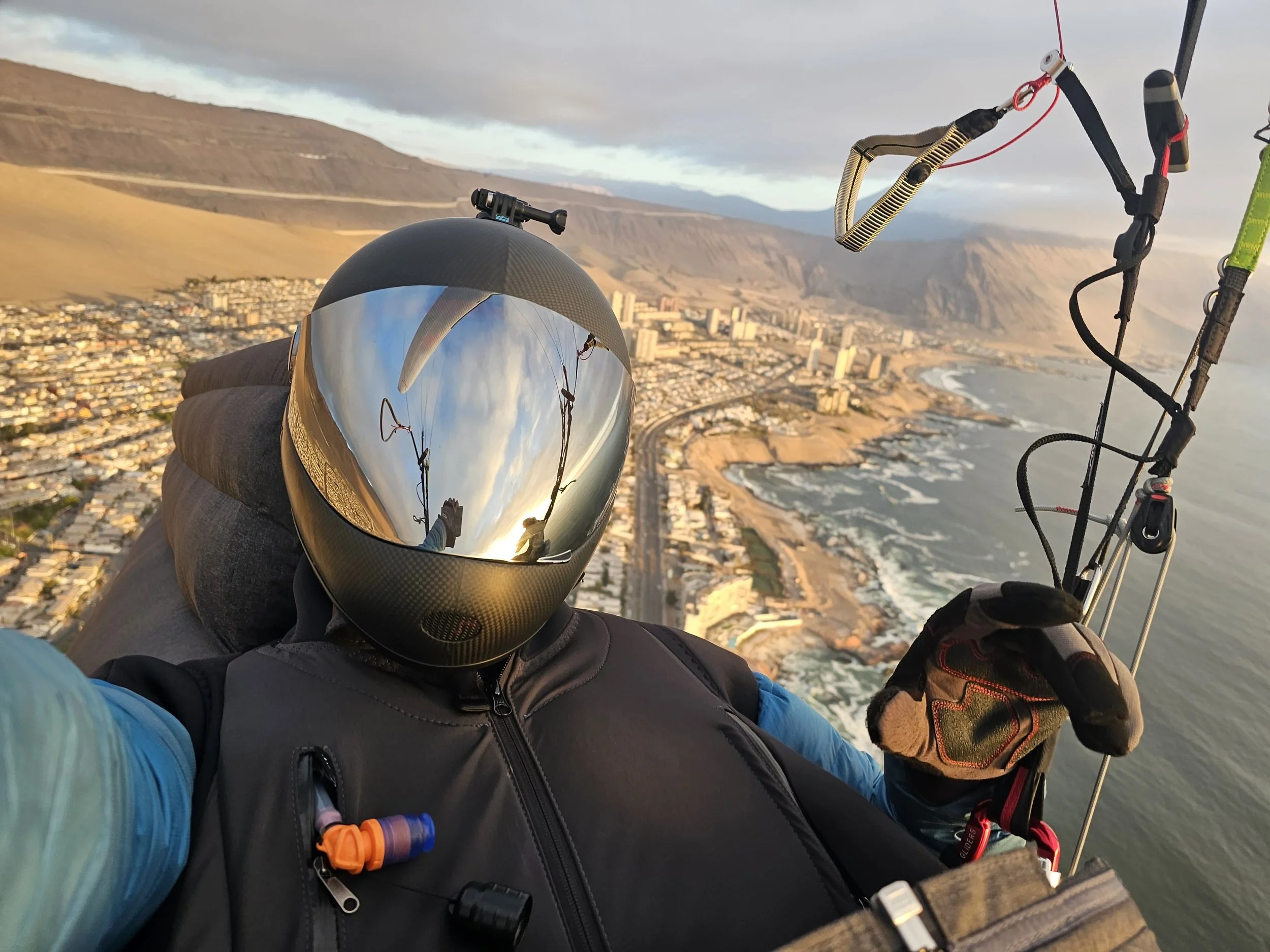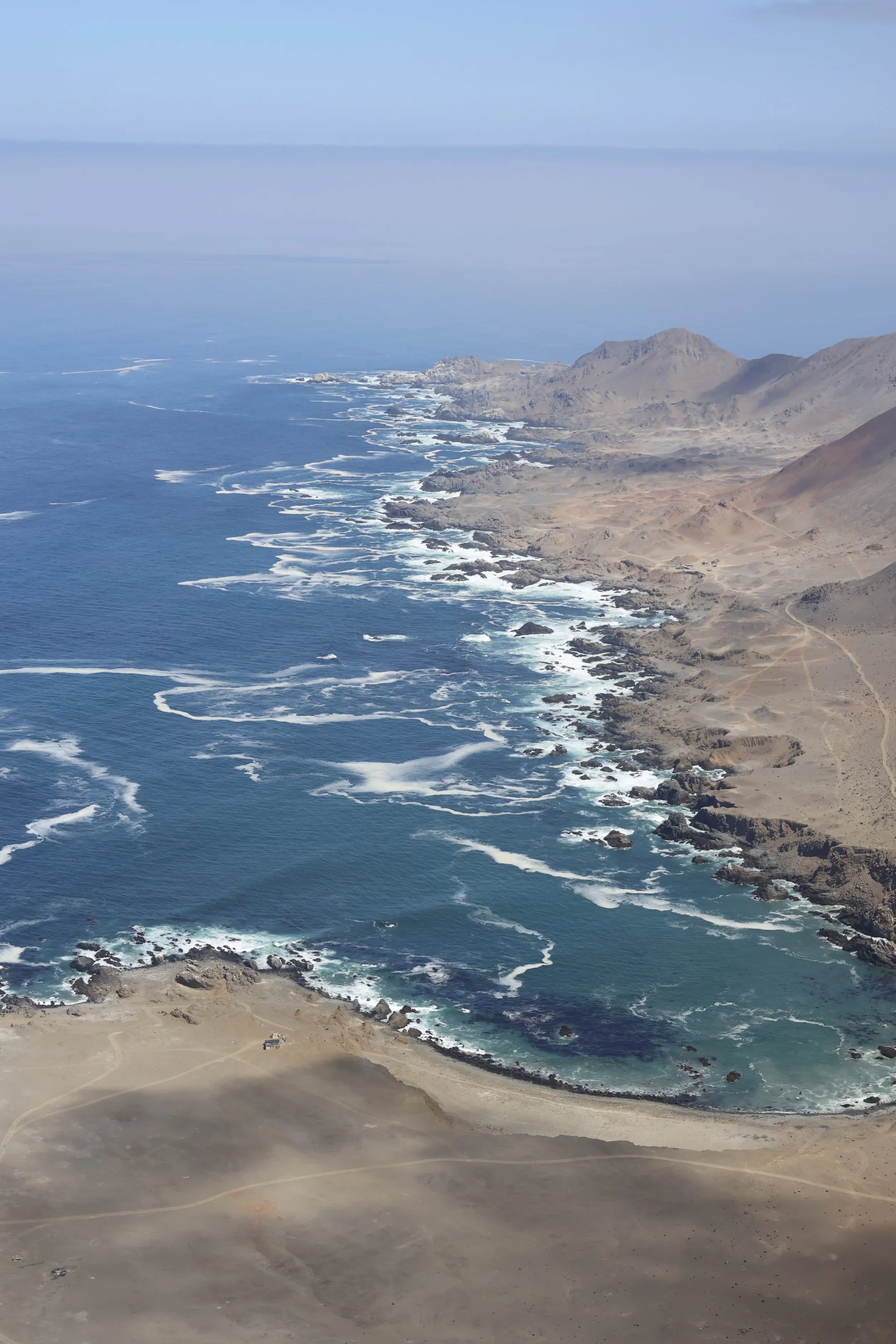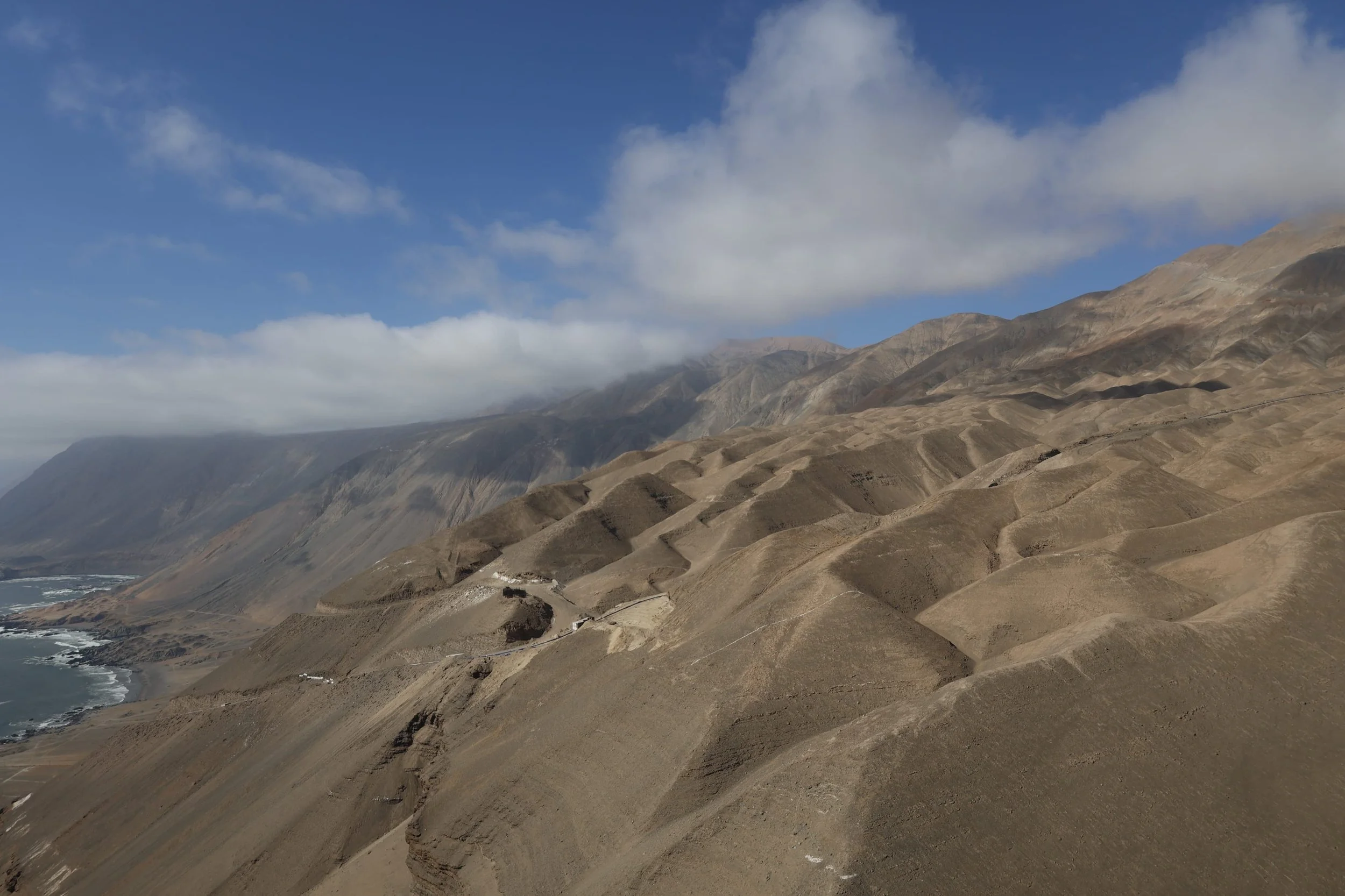What It Really Took to Fly 350 km Out and Back World Record
In October 2025, I was back in Iquique, Chile, a place I know well from guiding pilots during my annual trips. The region’s desert cliffs, long coastal ridges, and smooth thermals make it a unique playground for cross-country paragliding. But this time, I came with a personal goal beyond guiding: to push the limits of what’s possible in the sky.
Earlier that year, I had been preparing for a straight-line world record attempt in South Africa, with support from several brands and a detailed plan in place. Unfortunately, that project had to be postponed after our main local organizer stepped away due to a family emergency. It was a tough setback after months of preparation. Rather than letting the season go to waste, I decided to make the most of my time in Chile and pursue a different kind of world record, the Out & Back distance flight in a region I know very well.
Watch & Follow
YouTube Video: Watch the 328 km Flight
XC Track – 328 km Flight: Patillos
XC Track – 350 km Flight: Alto Hospicio → Playa Brava
Gear And Setup
For both record attempts, I relied on equipment optimized for long‑duration cross‑country flying:
Glider: Niviuk X‑One (CCC)
Harness: GIN Gliders Genie Race 5 Submarine
Helmet: Predator DH6‑X Air
Reserve Parachutes:
A square reserve for low‑opening scenarios (stable and predictable)
A steerable Rogallo reserve, the Beamer 3, used only for high‑opening situations, as it can exhibit a swinging movement during deployment and is therefore more suitable as a secondary option rather than a primary low‑opening reserve
This setup provided stability, comfort, aerodynamic efficiency, and a high level of safety, allowing me to focus on reading the air, making strategic decisions, and managing nearly ten‑hour legs without equipment distractions.
Flight 1: 328 km from Patillos: Discovering the Potential
Takeoff & Landing: Patillos area
Track: XCTrack Link
Only during weekends can pilots launch from the Iquique main takeoff in Alto Hospicio, due to an active airspace just south of the city. For my first attempt, I drove over an hour south to a lesser-used site called Patillos.
From there, I launched and managed to fly 328 km out and back, setting a new World Record.
The flight had an unusual early twist: by 8:30 am, a sea breeze had kicked in — far earlier than normal, as this area usually experiences katabatic winds until around 9:30–10:00 am. Despite this, I was in the air by 9:00 am, with plenty of lift available in the Patillos area. Just a bit further south, however, conditions were still early and cloudy, and some valleys remained katabatic, showing how dramatically weather can vary across short distances.
Once the thermals fully developed, the wind strengthened significantly, making the outbound leg very difficult. Most of the ridge arms extending toward the ocean were quite bumpy due to rotor turbulence, adding another layer of challenge. On the return leg, the same wind became a helpful tailwind, allowing a much faster and smoother glide back to the landing site.
The day was physically demanding and mentally intense. The low cloud base required precise energy management and careful decision-making throughout. Flying from Patillos revealed the region’s true potential and convinced me that a weekend launch from Alto Hospicio could allow a more precise, declared record with official turnpoints and optimized route planning.
Flight 2: 350 km Declared Out and Back from Iquique
Takeoff: Alto Hospicio | Landing: Playa Brava, Iquique
Track: XCTrack Link
Five days later, on October 18, 2025, I launched from Alto Hospicio during the weekend. With help from the Chilean Federation and local observers, I filed a declared Out-and-Back route with official turnpoints, ensuring the flight would qualify for both a distance and a declared record. I also coordinated with local air traffic control, since part of the route approached controlled airspace near Iquique airport.
Conditions were challenging again with a low cloud base all day but the lessons from Patillos paid off. I flew more efficiently, made quicker decisions, and stayed mentally sharp throughout the journey.
The flight ended with a Declared Out And Return Distance of 350Km, a new world record and also the for Free Out and Return Distance and Speed over out and return courses of 300km , a new fastest average speed of 36.15 km/h. All three are now in the process of being officially ratified by the FAI.
Preparation, Mindset, and the FAI Process
Setting a world record in paragliding is far more than just taking off. The process begins long before the wing leaves the ground, with careful planning and preparation.
For this project, I started weeks before even arriving in Chile, studying the terrain, weather forecasts for the season, and potential takeoff and landing options. I planned retrieval logistics, coordinated a driver to shuttle me to takeoffs, and made sure all safety measures were in place, including travel insurance and an InReach GPS device for real-time tracking and emergency communication.
Equipment choice was also a key factor. Beyond flying Niviuk X-One and the GIN Genie Race 5 Submarine harness, I reached out to brands for support. Niviuk welcomed me into their CCC racing class team, providing me with an incredible glider. I also optimized aerodynamics with the Predator DH6-X Air helmet, and carefully selected reserve parachutes, including a square reserve for low openings and a Beamer 3 Rogallo steerable reserve for high openings.
Mental preparation was equally important. I approached the flight knowing I had done the detailed pre-study, had experience as a test pilot for Gin Gliders, and had spent years honing cross-country skills. This preparation allowed me to stay confident, provided decent conditions and that the record was achievable.
As a first-time world record attempt, I also relied on local expertise. I reached out to Chilean friends and pilots, including Ruben from the Chilean Federation, who provided guidance on local conditions and FAI procedures. Their help was essential, especially as a few local pilots had previously flown impressive distances but failed to follow the proper FAI process, preventing official ratification.
For the declared flight on October 18, the process involved several steps:
Assigning official observers through the Chilean Federation
Sending flight plans, coordinates, and takeoff information via email to observers and FAI contacts
Coordinating with Iquique airport air traffic control, including sending a document with all details and making pre- and post-takeoff calls
Using a my Garmin Inreach for live tracking so observers could follow progress in real time
The first flight from Patillos taught me important lessons about strategy, endurance, and adaptation, including how wind direction, ridge turbulence, and variable lift affect both outbound and return legs. It also served as a kind of refresher on the local terrain and a warm-up for the second, declared flight. Every decision from the route, to energy management, to anticipating changes in conditions contributes directly to success. Even minor errors, like circling in the wrong location, can have huge mental and time consequences on a long cross-country flight.
After landing, the process continues. I notified observers and the FAI within the allowed seven days, though in practice, observers were already congratulating me during the live flight. The full ratification process, including payment of FAI fees, has a longer timeline (up to 120 days), ensuring all documentation is complete and accurate.
Ultimately, the mindset, combining patience, foresight, technical skill, and confidence was just as important as physical endurance or equipment. Every hour in the air is a test of decision-making, focus, and adaptation, and following the FAI process ensures that the achievement is officially recognized and recorded.
Reflections and Looking Ahead
Flying 350 km out and back in the Chilean desert wasn’t just about setting a number on a map, it was about the thrill of discovery, the patience required to read the air, and the satisfaction of executing a plan with precision. Every moment in the sky, from battling tricky thermals to cruising with tailwinds, reminded me why I fell in love with cross-country paragliding in the first place.
For pilots, these flights highlight that world records don’t happen by accident. They come from preparation, persistence, and a willingness to adapt, reading the sky, thinking ahead, and making split-second decisions that add up over hours in the air. Yet the most magical part is the pure joy of flying, exploring new terrain, and testing the limits of what your wings and mind can achieve.
Looking forward, this record is just one step. There are straight-line and triangle records on the horizon, and every flight like this adds experience, confidence, and data to tackle even bigger challenges. Whether you’re chasing personal bests, competing, or just dreaming of a long XC adventure, the lessons are the same: study, prepare, trust your skills, respect the air, and most importantly, enjoy every moment in the sky.
I’m excited to get back to my homesite in Costa Rica for the dry season, teaching and flying tandems to share all I have learnt with students and my passion for flying with passengers. All before setting off again for a new record breaking adventure next summer in Europe.
To any pilot reading this: the sky is full of possibilities, and there’s a unique thrill in pushing boundaries safely and creatively. Whether it’s a new personal record or your first long flight, remember that every decision, every kilometer, and every thermal is part of the adventure. And who knows? Maybe your next flight could rewrite the record books too.
Watch & Follow
YouTube Video: Watch the 328 km Flight
XC Track – 328 km Flight: Patillos
XC Track – 350 km Flight: Alto Hospicio → Playa Brava



